PPF vs Ceramic Coating
Do you care about your car? Do you care about the physical appearance of your car’s exterior? If so, you’ve probably done some research about the products available for protecting and preserving your car’s paint, and you’ve probably come across some information about two different products: Paint Protection Film (PPF or Clear Bra, such as XPEL Ultimate), and Ceramic Coatings (such as Opti-Coat Pro+).
What’s the difference between these two products? What will they accomplish for your car? And what will be the best solution for protecting your car’s paint?
Let’s dive into those questions.
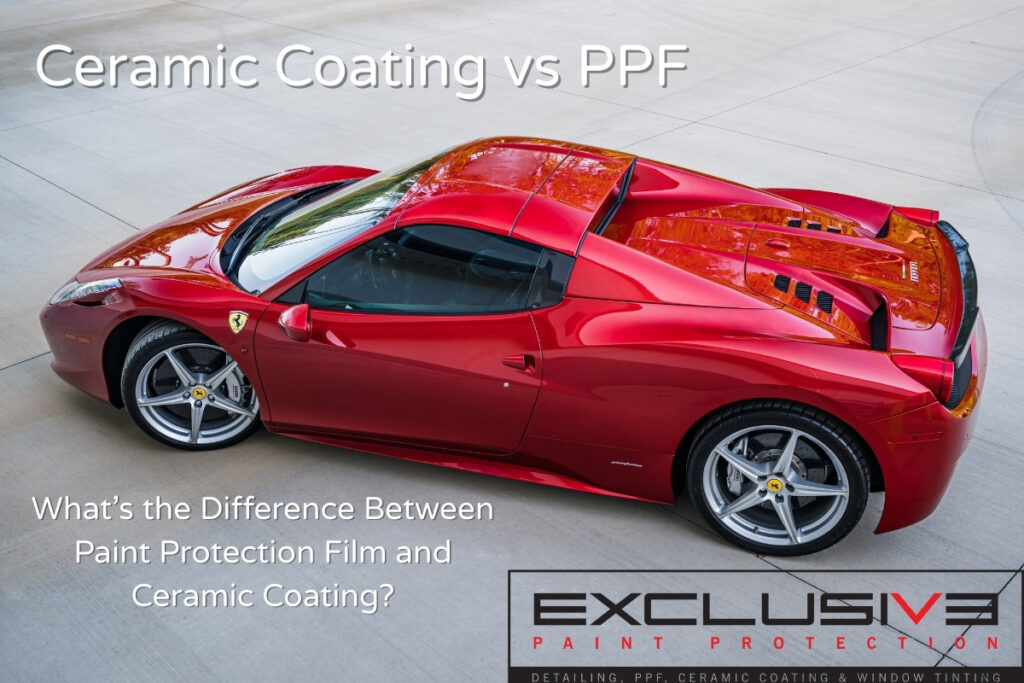
What is a Paint Protection Film?
Paint Protection Film is a transparent, urethane material that can be applied to any exterior painted surface on your vehicle. In short, automotive Paint Protection Film preserves the quality of your car’s paint by reducing the risk of multiple kinds of damage, such as…
- Chips and scratches caused by rocks and road debris
- Swirl marks created during washing
- Chemical stains caused by acidic contaminants
- Chemical etch marks caused by acidic contaminants
- Hard water spots from mineral deposits
- Oxidation (fading) from UV exposure
If you want to learn more about the history and technology behind Paint Protection Film, read our formal introduction to the product.
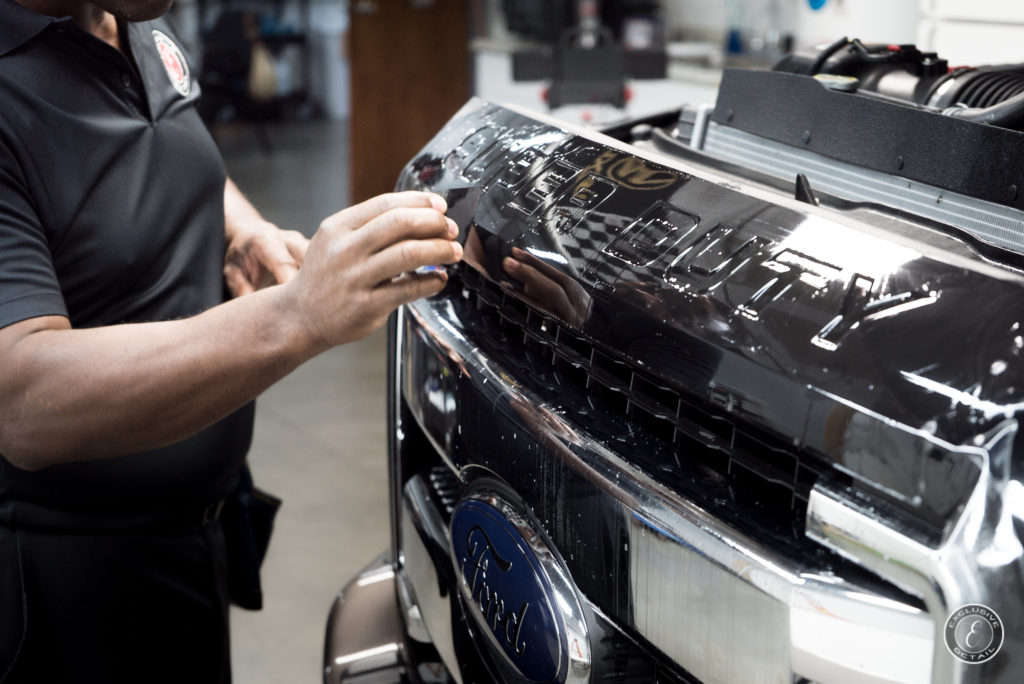
What is a Ceramic Coating?
Ceramic Coating is a liquid polymer that is applied to the exterior surfaces of a vehicle. After application, it chemically bonds with the vehicle’s factory paint, establishing a layer of protection and a hydrophobic surface. The hydrophobic properties of Ceramic Coating make it harder for contaminants to bond with your car’s paint. This has two main benefits for the car owner.
- It helps keep the car cleaner for longer.
- It makes the car easier to clean when the time does come for a wash.
A Ceramic Coating will also help reduce the risk of certain kinds of damage, such as…
- Chemical stains caused by acidic contaminants
- Chemical etch marks caused by acidic contaminants
- Oxidation (fading) from UV exposure
Learn more about the benefits and limitations of Ceramic Coatings, you can read about them here.
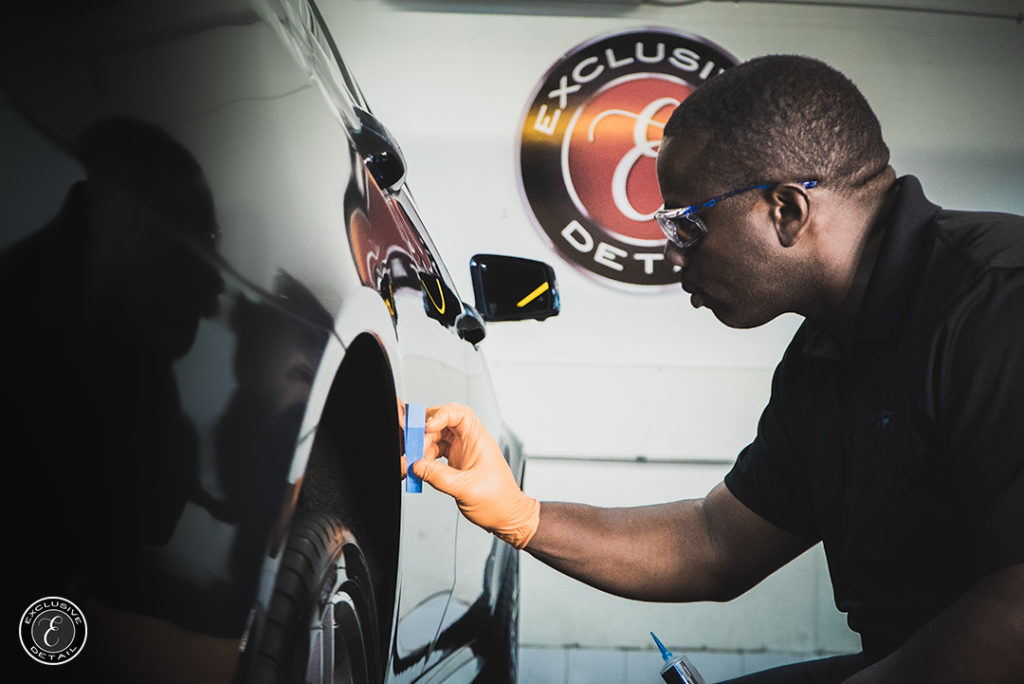
How Are Paint Protection Films and Ceramic Coatings Similar?
As you can see, both products serve the purpose of keeping your car looking newer for longer by protecting and preserving your car’s paint.
In addition to this common central aim, the two products have some overlapping performance features. Specifically, both products help reduce damage from UV exposure and acidic contaminants.
In the end, if you choose to purchase Paint Protection Film or a Ceramic Coating, you will be adding value to your vehicle.
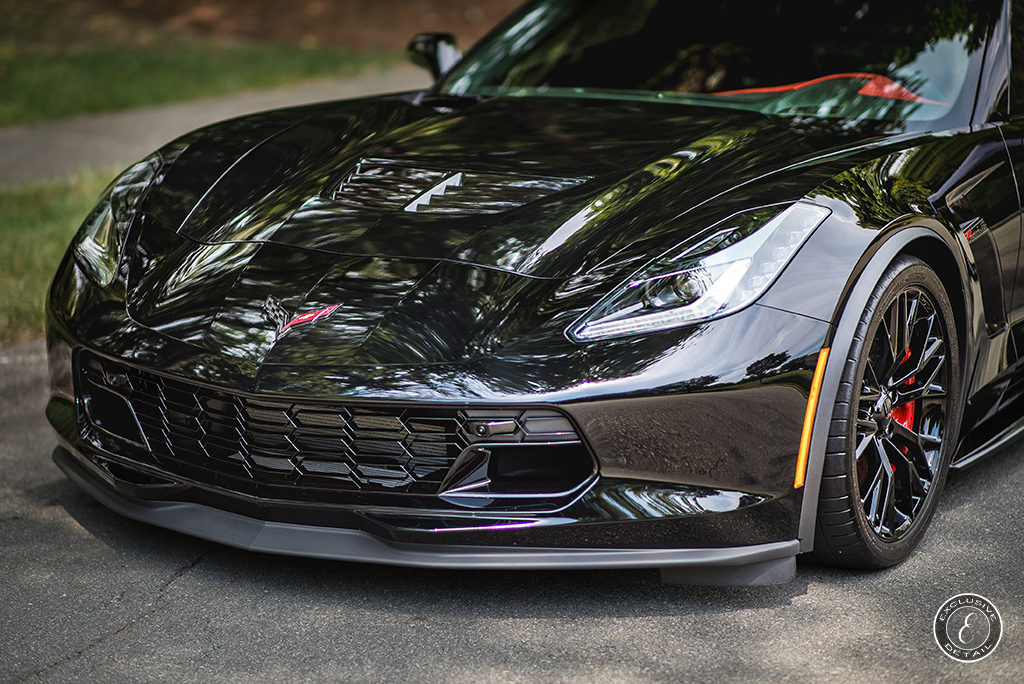
How Are Paint Protection Films and Ceramic Coatings Different?
Despite these similarities, Paint Protection Films and Ceramic Coatings do have significant differences and serve different purposes.
- Paint Protection Film is thicker than Ceramic Coatings
- Paint Protection Film has a chemical composition that allows it to self-heal (it returns to its original form after receiving an indentation or abrasion)
- These qualities make Paint Protection Film able to absorb rock chips, small scratches, swirl marks, and hard water spots without being permanently disfigured. Ceramic Coating does not have that ability.
- Despite the wild claims of some manufacturers and installers, Ceramic Coating does not eliminate the risk of rock chips, scratches, swirl marks, and water spots.
However, Ceramic Coatings do have their strength, particularly in terms of the hydrophobic surface they create.
- Some Paint Protection Films are equipped with a hydrophobic clear coat, but they often do not perform at the same level as a full Ceramic Coating.
- When you apply a Ceramic Coating to your vehicle you get the benefits of its hydrophobic properties on every surface without having to apply film to the whole vehicle.
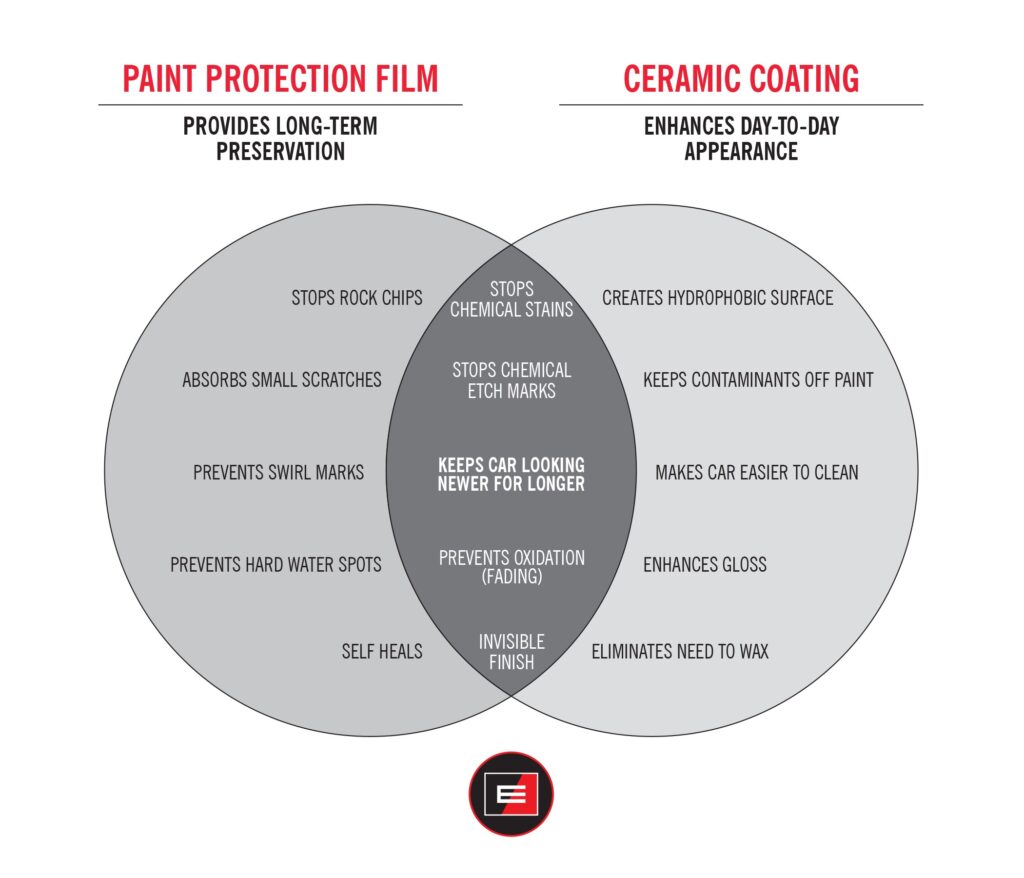
What’s Better? Ceramic Coating or PPF?
So which product is right for your car?
Here’s the good news. You don’t have to choose one or the other. They can both be applied to the same vehicle. The dynamic duo of Paint Protection Film and a Ceramic Coating is the ultimate form of invisible protection you can purchase for your car.
Here’s how it works.
Paint Protection Film is applied first to the portions of your vehicle that will be most susceptible to rock chips or scratches from road debris. Since a Ceramic Coating does not protect against this kind of damage, it’s important to apply Paint Protection Film to these areas. This often includes the front bumper, hood, fenders, side mirrors, rocker panels, and rear wheel arch.
Once the most vulnerable areas are protected with Paint Protection Film, your whole car receives a Ceramic Coating. The coating will bond to both the vehicle’s factory paint and the film that has already been applied. When applied on top of film, coating will provide an additional layer of protection from chemical etching and stains. It will also help keep the film clean and free from contaminants, which will lengthen the life of the film.
Everywhere else on the vehicle, whether protected by film or not, the Ceramic Coating will thwart oxidation and chemical etch marks or stains. Moreover, the hydrophobic surface will make it harder for contaminants to bond to the vehicle, keeping the paint cleaner and making it easier to wash. The smooth surface of the Ceramic Coating will also enhance the gloss of your vehicle’s factory paint.
Together, the two products will preserve your car’s paint over the long-term, and enhance its appearance on a day-to-day basis.

Drive Protected
So if your aim is to protect and preserve your car’s paint so that it looks stunning every day your drive it, a combination of Paint Protection Film and Ceramic Coating may be the best fit for you.
If you want to learn more, take a look at this Mercedes AMG GT-S we equipped with Paint Protection Film, or read about the specific benefits of applying a Ceramic Coating to your wheels.
Are you ready to drive protected? If so, contact us today to schedule an appointment or ask any questions you may have about how you can protect your car’s paint.


